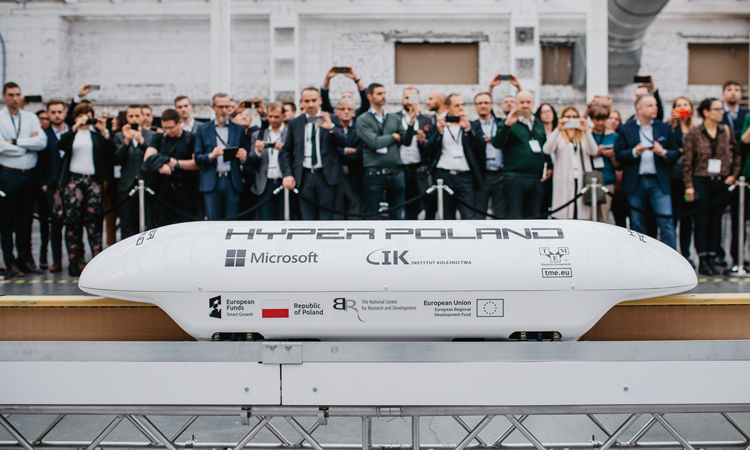Hyper Poland achieves €451,000 investment target 10 days after launch
Posted: 9 March 2020 | Global Railway Review | No comments yet
The funding will enable Hyper Poland’s testing and development of the next generation of high-speed railways, based on magnetic levitation.


Credit: Hyper Poland
Following its launch on investment platform Seedrs, Hyper Poland has achieved its €451,000 investment target in only 10 days. The funding will enable continued testing and development of the next generation of high-speed railways, based on magnetic levitation, linear motor and autonomous control systems. Over 390 investors have been successfully secured, most based in the UK and Poland. Hyper Poland’s campaign will continue into over-funding, with any additional investments used for further research into a unique patent-pending tilting mechanism.
Przemysław Pączek, CEO and co-founder of Hyper Poland said: “We are delighted to hit our investment target so soon into this funding round. This investment will be used as a 20 per cent own contribution to the grant from the National Center for Research and Development. This means that for every €1 invested by the Seedrs platform, we get another €4 from the grant. We started using this mechanism in August [2019], and it covered some of the funds collected in the first round of equity crowdfunding, organised between March and May 2019.”
Hyper Poland is currently the only company in the world developing the technology, believing that the gradual implementation of hyperloop-inspired solutions will provide much-needed innovation to the railway industry. The ultimate goal is to restore the competitive edge of existing railway lines by developing hardware to upgrade existing infrastructures to a high-speed, high-frequency standard.
Currently, Hyper Poland’s unique, patent-pending technology centres around a magrail system – a passive magnetic levitation train operating on existing conventional railway tracks with speeds up to 186mph or 258mph on high-speed rail lines. The hybrid solution allows for the functionality of both the magrail system and conventional trains on the same tracks, so railway operators can depreciate their existing conventional rolling stock.
In the future, the technology has the ability to be transformed into a vacuum hyperrail system, hitting a top speed of 373mph on existing conventional tracks and 621mph on high-speed rail lines. The final stage of this transformation will involve building dedicated tracks to enable the hyperloop to travel at up to 746mph.
The significance of this innovation is huge, as it will create a fast, efficient transportation system operating at a high-frequency. This will increase the transport of goods and people to create a completely new economic, social and environmental landscape. Additionally, the innovation will help to transform the current transportation system, which is dependent on fossil fuels, into a zero-emission system propelled by renewable energy sources.
Related topics
Funding & Finance, High-Speed Rail, Hyperloop Technology, Regulation & Legislation







